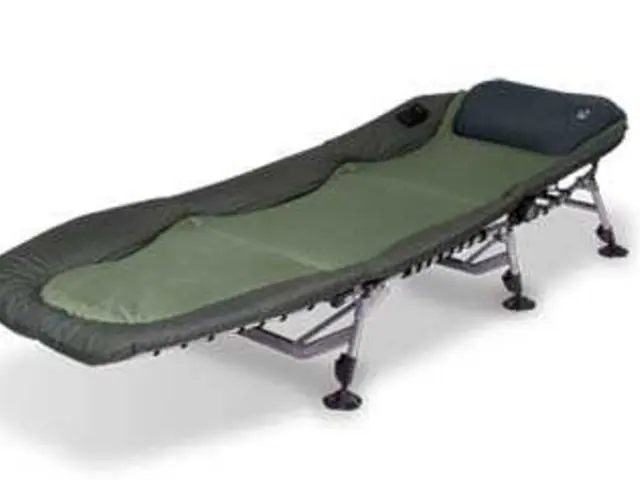Raunchy Guide to Medication-Assisted Treatment (MAT) for Opioid Addiction
Detailed Handbook on Opioid Treatment Utilizing Prescription Medications
Opioid addiction has been a scourge across the United States, causing catastrophic damage to public health and communities. As the addiction rates soar, there's an increasing need for powerful, evidence-based treatments. One such treatment is Medication-Assisted Treatment (MAT), a badass combo of FDA-approved meds and behavioral therapy that's been proven to help folks beat their addiction. Let's dive into what MAT is, how it works, and why it's a lifesaver for those battling opioid addiction.
What the Hell is MAT?
MAT is a kick-ass approach that unites FDA-approved medications with behavioral therapy and counseling to treat substance use disorders, particularly opioid addiction. The goal here isn't just to manage withdrawal symptoms but to support long-lasting recovery and reduce the likelihood of relapse.
Contrary to some bullshit myths, MAT isn't about swapping one drug for another. Instead, it's about correcting brain chemistry, blocking the euphoric effects of opioids, and normalizing bodily functions without the destructive effects of the abused drug.
Why MAT Kicks Ass for Opioid Addiction
MAT is considered the gold standard for treating opioid addiction because of its impressive track record of success. Studies have shown that MAT:
- Reduces opioid use and overdose deaths
- Boosts treatment retention and patient survival rates
- Lowers criminal activity among addicts
- Increases the probability of employment and social functioning
MAT is backed by major health organizations, including the Substance Abuse and Mental Health Services Administration (SAMHSA), the Centers for Disease Control and Prevention (CDC), and the National Institute on Drug Abuse (NIDA).
Methadone
Medications Used in MAT
Methadone is a long-acting full opioid agonist that helps get a grip on cravings and withdrawal symptoms. It's usually administered through certified opioid treatment programs under close medical supervision.
Buprenorphine (Suboxone, Subutex)
Buprenorphine is a partial opioid agonist, meaning it activates opioid receptors but not as powerfully as opioids like heroin or fentanyl. It can be prescribed in a doctor's office, making it easier to access than methadone.
Naltrexone (Vivitrol)
Naltrexone is an opioid antagonist, which means it knocks opioid receptors in the brain. It won't eliminate cravings but prevents any opioid from producing a high. It's often suggested for individuals who have already detoxed.
Each medication functions differently, and the best option depends on an individual's unique medical history, severity of addiction, and treatment goals.
The Role of Behavioral Therapy in MAT
While medications are a vital component of MAT, they're most effective when coupled with counseling and behavioral therapies. These therapies enable people:
- To uncover the roots of their addiction
- To learn coping techniques to deal with triggers
- To rebuild relationships and social skills
- To set and achieve recovery goals
Popular approaches include Cognitive Behavioral Therapy (CBT), Motivational Interviewing (MI), and group therapy, among others.
Who's a Good Candidate for MAT?
MAT is ideal for a wide range of individuals grappling with opioid addiction, from those in the early stages to those with chronic, long-term use. Candidates are generally evaluated based on:
- Medical and psychiatric history
- Level of opioid dependence
- Willingness to participate in therapy and follow-up care
- Pregnancy or other special conditions
MAT is also proven to be safe and effective for pregnant women, decreasing the risk of neonatal abstinence syndrome (NAS) when properly managed.
What to Expect in a MAT Program
A quality MAT program commences with an extensive assessment followed by a personalized treatment plan that includes:
- Medical evaluation and medication selection
- Ongoing monitoring to tweak dosage and address side effects
- Counseling sessions and recovery support services
- Long-term planning for weaning off medication or continued maintenance
Every patient's journey is unique-some may remain on medication for months or years, while others taper off sooner. The focus is always on recovery at a sustainable pace.
Addressing Stigma and Misconceptions
Despite its effectiveness, MAT is often misunderstood. Some people see it as a crutch or even a substitute addiction. These ignorant assumptions can deter individuals from seeking life-saving treatment.
In reality, MAT is a medically supervised process that restores functionality and reduces the risk of relapse. Like insulin for diabetes or medication for depression, MAT is a legitimate, science-backed treatment that deserves support-not stigma.
Finding a MAT Program
If you or someone you adore is mulling over MAT, it's crucial to pick a program that offers both medication and therapeutic support in a safe, nonjudgmental environment.
A fantastic starting point is White Oak Recovery Center, which provides a structured and compassionate medication assisted treatment for opioid use disorder. Their integrated approach combines medical care, behavioral therapy, and peer support to help individuals achieve lasting recovery.
Conclusion
Medication-Assisted Treatment represents a powerful, proven solution in the fight against opioid addiction. By combining medication with therapy, MAT addresses both the physical and emotional aspects of addiction, increasing the chances of long-term success.
If you're pondering treatment options, don't let outdated views or fear of judgment hold you back. Education and support are the first steps toward recovery. Consider reaching out to a professional MAT program today-and take that vital step toward healing.
Also Read-The Evolution of AI Art Generator Technology and the Undressher Phenomenon****
- Advances in science and medical-conditions have led to the development of therapies-and-treatments such as Medication-Assisted Treatment (MAT) for chronic-diseases like opioid addiction, which have been causing widespread concerns regarding health-and-wellness and mental-health.
- The combination of FDA-approved medications like Methadone, Buprenorphine, and Naltrexone, along with behavioral therapy and counseling, form the cornerstone of MAT, a treatment approach that addresses not only the physical symptoms but also the psychological aspects of addiction.
- Health organizations such as the Substance Abuse and Mental Health Services Administration (SAMHSA), the Centers for Disease Control and Prevention (CDC), and the National Institute on Drug Abuse (NIDA) endorse MAT as an evidence-based treatment for opioid addiction, emphasizing its effectiveness in reducing relapse rates, increasing patient survival, and promoting health-and-wellness and mental-health recovery.








